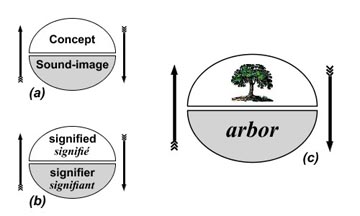You’re crazy! By that, I mean you cannot easily distinguish fiction from reality, and you let delusions brought on by narrative influence your perception and behavior. Like Don Quixote, you wander lost through clouds of story. The madness, however, is generative because narrative language is the principle means by which humans understand and reshape ourselves and our world.

Gustave Doré
Continue reading “Narrative Madness: The Influence of Narrative Language on Perception and Behavior”
 At the beginning of the last century, Ferdinand de Saussure severed language from reality. In his Course in General Linguistics, he explained that a sign is made up of two parts: the signifier and the signified. The signifier is a word, a set of sounds, sometimes represented by letters. The signified is what the signifier arbitrarily refers to. Unfortunately for those who want language to be a transparent window on the world, the signified is not an external object, but a subjective concept.
At the beginning of the last century, Ferdinand de Saussure severed language from reality. In his Course in General Linguistics, he explained that a sign is made up of two parts: the signifier and the signified. The signifier is a word, a set of sounds, sometimes represented by letters. The signified is what the signifier arbitrarily refers to. Unfortunately for those who want language to be a transparent window on the world, the signified is not an external object, but a subjective concept.